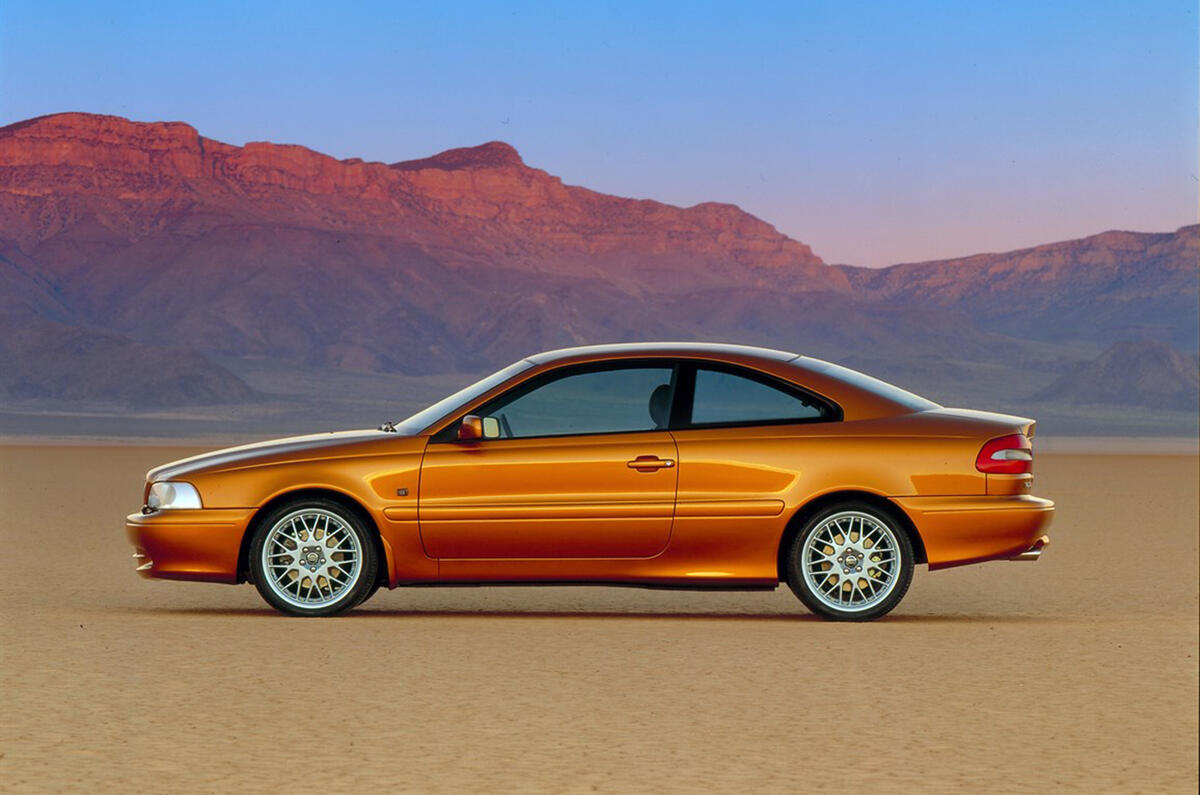There was a time when Volvo’s aversion to curves was so acute that you’d see one only in the wheel in your hands, under the arches or perhaps under the bonnet, where the arc of a cable had escaped the company’s obsession with the straight and narrow.
That changed quite suddenly in 1996 with the arrival of the C70 coupé and convertible. This pair presented a curving nose, a bonnet with a billow in it and subtly rounded shoulders. It wasn’t much, but this Volvo looked like a rebel in a showroom packed with sharp-edged, bluff-fronted saloons and wagons. It was quite a surprise to see something vaguely sporting emerge from Volvo, too.
The Swedish company’s flirtations with athletically bodied models have never been more than patchy. Its most famous and admired model is still the P1800 coupé of 1961. Others followed after intervals, including the 1800 ES sports estate that inspired the later, appealingly oddball 1986 480 ES and the not-for-Britain Bertone 780 of the same year.
If you’re thinking that the vinyl-capped 262C coupé has been omitted from this list, that car was about as sporting as a Russian Olympic team. The C70 promised more than this, despite being front-wheel drive. Some turbocharged five-cylinder engines helped – less exciting varieties were available – as did a chassis benefiting from mild attempts to get this moderately big coupé to briskly obey the swivellings of its steering wheel.
The bigger challenge was to find a way of getting the project green-lighted in the first place. Coupés and convertibles are always uncertain projects. Lifetime production volumes are never likely to be big, and once the novelty has worn off, the sales curve tends to follow the trajectory of a spent firework.
To share the risk, Volvo enlisted the engineering consultancy of British race ace Tom Walkinshaw to help develop the car, and find a factory to make it, duly unearthed in Uddevalla, in Sweden. The risk sharing extended to persuading Renault to build its mid-engined Clio V6 at the plant, although this arrangement was less unlikely than the sight of Porsche Boxsters and Lada Samaras coming down the Finnish contract manufacturer Valmet’s Uusikaupunki plant.
Offering the C70 with two bodystyles also improved its chances. The convertible’s roof was fully electric, neatly self-stowing beneath a lifting rear tonneau cover, while the coupé offered more rear room, the drop-top’s back seats little more than attractively upholstered instruments of torture for any claustrophobic. Still, their heads were well protected by a device sexily named ROPS – for roll-over protection system – a robust hoop firing skywards in the event of any threatened inversion, as per the Mercedes SL.





Join the debate
Add your comment
This feels like a bit of a half review, or an incomplete article to me, a proper Friday job. This car exists, meh, so what ? It's in the 'used cars' section, so apart from the convertible having horrible scuttle-shake, what's to look out for, how old are they now (when did they stop making them), any issues, etc. Quick Google shows there was a new model in 2010, stopped making them ~2013. Diesels, petrols, geartronic ?? Anything ? No ?
If you can't be bothered then just don't do it...
I love exploring the extensive car reviews and news on this site! It's a great resource for anyone looking to buy a car. Also, if you're into addictive games, check out Coreball for some fun on the side!